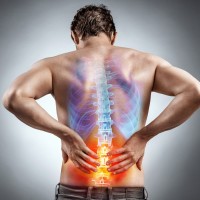Frozen Shoulder And Impingement
About
There is no way to tell how much pain a person has. No test can measure pain intensity, no imaging device can show pain, and no instrument can locate pain precisely. Sometimes, as in headaches, physicians find that the best aid to diagnosis is the patient’s description of the pain’s type, duration, and location. Defining pain as sharp or dull, constant or intermittent, burning, or aching may give the best clues to the cause of pain. These descriptions are part of the physician’s pain history during the preliminary examination of a patient with a problem.
Physicians, however, do have several technologies they use to find the cause of pain. Primarily these include:
• Electrodiagnostic procedures include electromyography (EMG), nerve conduction studies, and evoked potential (EP) studies. Information from EMG can help physicians tell precisely which muscles or nerves are affected by weakness or pain. Thin needles are inserted in muscles. A physician can see or listen to electrical signals displayed on an EMG machine. With nerve conduction studies, the doctor uses two sets of electrodes (similar to those used during an electrocardiogram) placed on the skin over the muscles. The first set gives the patient a mild shock that stimulates the nerve that runs to that muscle. The second set of electrodes is used to record the nerve’s electrical signals. From this information, the doctor can determine if there is nerve damage. EP tests also involve two sets of electrodes — one set for stimulating a nerve (these electrodes are attached to a limb) and another set on the scalp for recording the speed of nerve signal transmission to the brain.
• Imaging, especially magnetic resonance imaging or MRI, provides physicians with pictures of the body’s structures and tissues. MRI uses magnetic fields and radio waves to differentiate between healthy and diseased tissue.
• A neurological examination in which the physician tests movement, reflexes, sensation, balance, and coordination.
• X-rays produce pictures of the body’s structures, such as bones and joints.
Images



